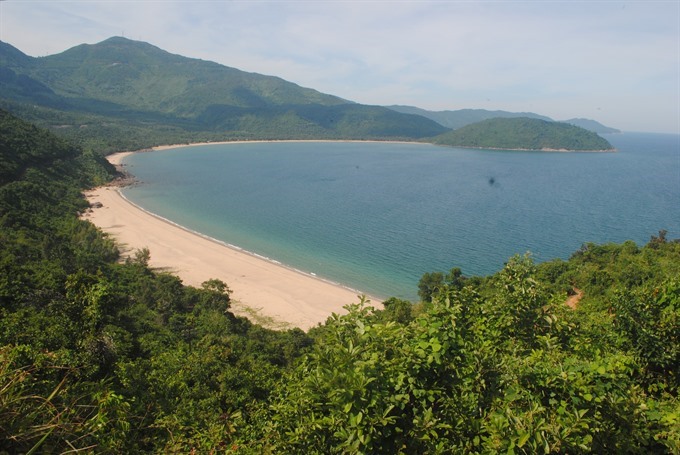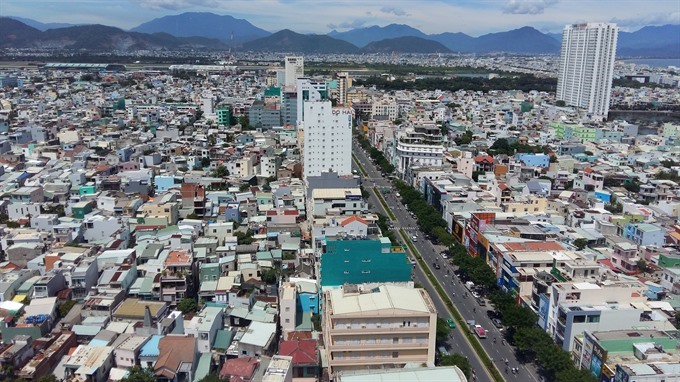 Society
Society

The central city of Đà Nẵng should aspire to become a top destination and hub for tourism, finance, logistics and hi-tech investors, the director of the Việt Nam Institute of Economics, Trần Đình Thiên, has said at the Science Workshop on Đà Nẵng’s 20-year Development and Future Outlook.
 |
| The pristine beach of Hải Vân is an ideal location for a world luxury entertainment centre. VNS Photo Công Thành |
ĐÀ NẴNG — The central city of Đà Nẵng should aspire to become a top destination and hub for tourism, finance, logistics and hi-tech investors, the director of the Việt Nam Institute of Economics, Trần Đình Thiên, has said at the Science Workshop on Đà Nẵng’s 20-year Development and Future Outlook.
“Đà Nẵng is a young city with positive policies on boosting economic development and foreign investment. But the city has yet to take full advantage of its central coastal position and a rendezvous point of north and south Việt Nam,” Thiên said in his presentation to the workshop held last week.
“The city has not developed a link between beach and mountain tourism and tourism to other destinations in the central region,” he said.
Thiên suggested that the city’s leadership consider how to develop Đà Nẵng as a regular world centre of exhibitions and fairs to attract tourism, trade and investors – as places like Dubai and Bali did. He said Đà Nẵng lacks a world standard entertainment and shopping centre to boost luxury tourism and spending.
Vice chairman of the city’s People’s Committee, Đặng Việt Dũng, said the city had significant development achievements since it separated from Quảng Nam Province and came under the direct control of the central government 20 years ago, along with the main cities of Hà Nội, HCM City, Hải Phòng and Cần Thơ.
Dũng said the city’s economic restructuring resulted in industry and service accounting for 97 per cent, and agriculture for only two per cent.
He said the city’s Gross Domestic Product (GDP) brought in nearly VNĐ50 trillion ($2.2 billion) in 1997-15, with a stable growth of 10.47 per cent annually.
Still small scale
Dũng, however, admitted that the city’s economy was small scale, with 95 per cent being small and medium-sized businesses and with investment capital under VNĐ500 million ($22,000), each.
“The city will aim to develop high-tech agriculture and industry, tourism and services, logistics with good connections among the airport, deep sea port, north-south expressway and railway system in 2037,” Dũng said.
Deputy Secretary of the city’s party, Võ Công Trí, said the city had turned from being a slum in the Sơn Trà Peninsula to being a beach tourism destination in just 20 years.
“The city will eye tourism as a major source of revenue for its budget, That’s the reason the People’s Council decided to build Đà Nẵng as a livable city in terms of four criteria – social security, traffic safety, food safety and social welfare – in the 2016-20 period,” Trí said.
 |
| An overview of Đà Nẵng’s downtown. VNS Photo Công Thành |
Last month, the city submitted an adjustment to its master urban plan for 2030-2050 to the Government, with an aim of developing Đà Nẵng as a green city by 2025, and an economic hub of the central region and a driving force for boosting development of the central and Central Highlands regions.
The Government issued special regulations concerning investment, budgetary status and decentralisation for Đà Nẵng.
Đà Nẵng also plans to build an underground traffic system with road tunnels and a metro system in the coming years.
As planned, the city will include six inner districts and two suburban districts of Hòa Vang and Hoàng Sa Island, with an expected population of 2.5 million.
The city will be developed on 128,543ha, of which the Hoàng Sa (Paracel) islands cover 30,500ha.
Đà Nẵng, situated at the end of the East-West Economic Corridor linking Laos, Thailand, Myanmar and Việt Nam, will reserve a 130ha centre for finance, banking, trade and services, and a 3,700ha coastal service area. — VNS




